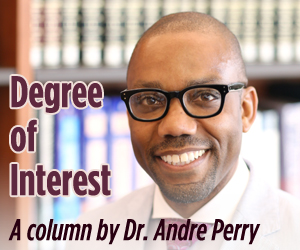Willing to die for justice? Comparing post-Katrina student activism to Freedom Summer
Two of the most significant student movements in the United States occurred in Jackson, Mississippi and New Orleans – separated by less than a three hours’ drive and fifty years. En masse, high school students and coeds migrated to these cities leading up to Freedom Summer of 1964, and they came in the years immediately following Hurricane Katrina. Those cities served as classrooms that taught students sociology lessons like no other, but what parallels and distinctions can we draw between the two time periods?
I asked that question to panelists who participated in a discussion and screening of Freedom Riders, a documentary directed by Stanley Nelson Jr., that was hosted by the Louisiana Endowment for the Humanities (LEH).
“External voices can certainly illuminate conditions of the oppressed,” said Brian Boyles of LEH. Some accounts have more than 1,000 youth volunteers, primarily from northern colleges, participated in some form of non-violent direct action during Freedom Summer. In the summer of 1961, a multiracial coalition of students road buses to protest the non-enforcement of segregated buses and accommodations across the interstate. Freedom Riders traveled directly into brutal mob violence and Klux Klux Klan terrorism. Freedom Riders consequently endured beatings by the hands of people who hand very different perspectives of community.
In the summer of 1964, youth erected approximately 30 Freedom Schools that taught a curriculum that included black history, the philosophy of the Civil Rights Movement, leadership development as well as remedial instruction in reading and math. The nadir of Freedom Summer occurred with the Klan killings of James Earl Chaney, Andrew Goodman and Michael “Mickey” Schwerner who all worked on the voter registration efforts. Still, the non-violent, civil disobedience and grassroots activism of young women and men from 1961 to 1964 have been deemed widely influential in the passage of the Civil Rights Act and other related legislation.
“If people think there’s a lack of urgency people are not listening,” — M.K. Nguyen, St. Paul Promise Neighborhoods
Freedom Summer taught us that students don’t and can’t wait for adults to bring social justice.
Katrina also sounded an alarm to which students responded. Almost immediately after the breeches in the levees in 2005, undergraduates from all over the country came to assist in New Orleans’ recovery. They came to help rebuild schools as part ofWilling to die for justice? Comparing post-Katrina student activism to Freedom Summer | Hechinger Report:
Free college idea picks up momentum
Adele Williams hears from a lot of her friends from high school about their struggles to afford the cost of college. “I have a best friend who goes to a public university, and she’s in quite a lot of debt,” said Williams. Higher and higher tuition, she said, “is just a scary thought for people to face.” Except for her. Williams doesn’t pay any tuition at all. She goes to Alice Lloyd College in Ken

